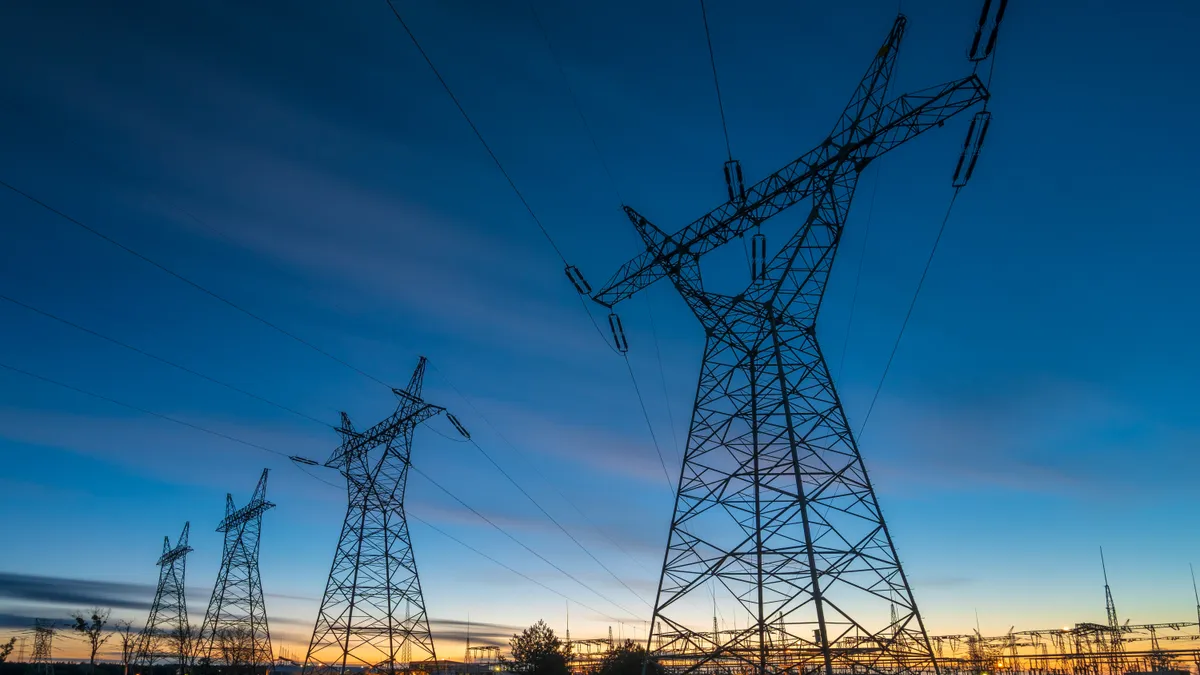Dive Brief:
- The U.S. electrical grid faces significant risk from extreme weather, rising demand, an evolving resource mix and physical and cyber attacks, according to a report published Tuesday by SAFE, a nonpartisan policy organization focused on energy issues.
- Expansion of the nation’s transmission system, including load transfer capabilities between transmission planning regions, is one way to improve reliability, the report concluded.
- Expansion of transfer capacity could make the transmission system “bigger than the weather,” Sen. John Hickenlooper, D-Colorado, said in a Tuesday discussion of SAFE’s report. Hickenlooper has introduced legislation to require transmission planning regions overseen by the Federal Energy Regulatory Commission to be able to transfer 30% of their peak electrical loads to neighboring regions.
Dive Insight:
Hickenlooper said his bill, the Building Integrated Grids With Inter-Regional Energy Supply Act, or BIG WIRES, would allow transmission regions to “tap into diverse resources to keep the lights on in times of need.”
The legislation was introduced Sept. 15, but was previously discussed as a possible component in the debt ceiling negotiations in May, which included transmission siting reforms. The bill was jointly introduced with Rep. Scott Peters, D-California.
“Just like utilities support one another with mutual aid agreements, interregional transmission allows regions to come to each other's aid when a big storm rolls in,” Hickenlooper said at SAFE’s discussion. The legislation would require an expansion of interregional transfer capacity but is “fully tech neutral with respect to how to meet the requirement and what generation sources get interconnected.”
SAFE’s report, “Grid in Peril: The Problem Statement,” is the first in a series the organization will release to discuss policies that can make the U.S. power grid more secure, sustainable and affordable.
“SAFE will support activities and legislation that will streamline siting and permitting processes to allow for more expeditious buildout of the necessary infrastructure, as well as the interregional transfer capability needed to meet our transmission needs for a reliable power grid,” the initial report said. The ability to transfer power across regions “minimizes disruptions and black-outs and optimizes least cost dispatch.”
The report is a “sobering” assessment of the grid, Thomas Coleman, executive director of SAFE’s Grid Security Project, said during Tuesday’s event. So-called “black swan events,” which are unpredictable and can be devastating to the grid, are the new normal, he said.
“We can expect to have more hurricanes, wildfires, and situations where we're actually shedding load,” Coleman said. “We definitely need national policies around growing our transmission ... [which] will help during these black swan events when we're able to transfer megawatt-hours from one area to another.”
The BIG WIRES Act has support from several organizations.
“This bill should be at the forefront of the conversation about how we should reform the permitting of our energy infrastructure,” Citizens’ Climate Lobby Vice President of Government Affairs Ben Pendergrass said in a statement. “Our volunteers look forward to discussing it in meetings with their members of Congress.”
The WATT Coalition praised the legislation’s inclusion of grid-enhancing technologies, or GETs, which can expand the capacity of existing transmission assets.
GETs “increase transmission capacity quickly and at very low cost, and also give grid operators more visibility and flexibility to respond to outages and other challenges,” WATT Coalition Executive Director Julia Selker said in a statement.
The BIG WIRES Act would “help pave the way for the rapid decarbonization of the electrical grid while reducing impact on wildlife habitats and ensuring a high level of reliability and resilience for consumers and businesses across the country,” said Sarah Rose, vice president of climate for the National Audubon Society.















